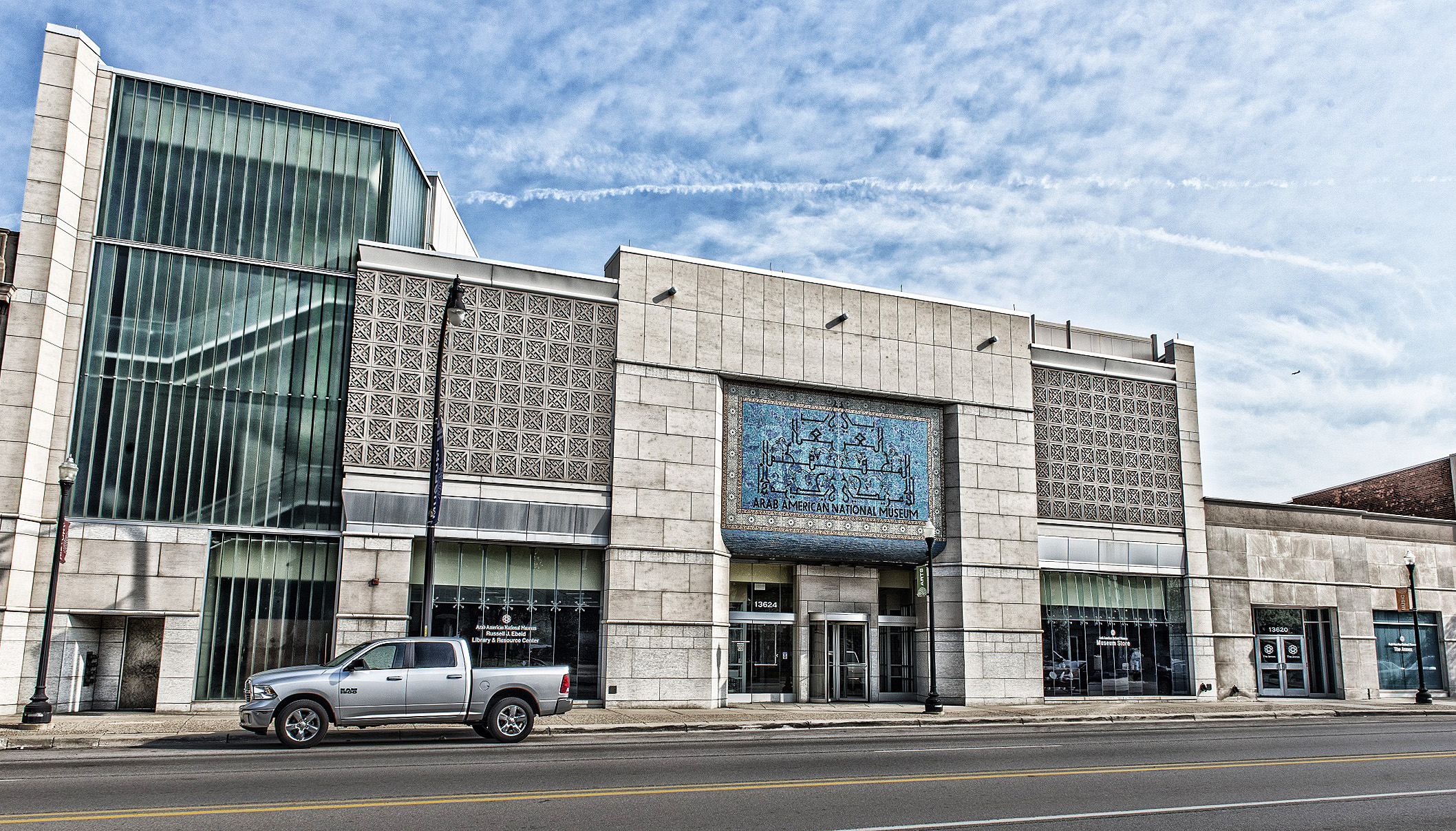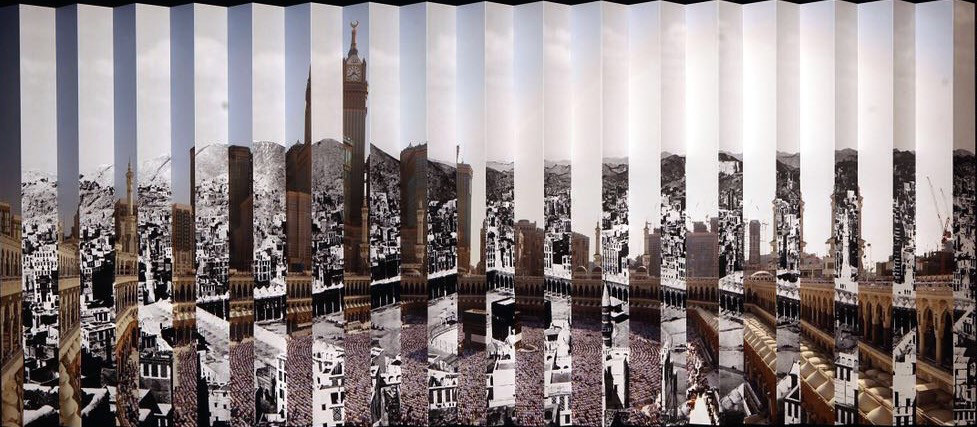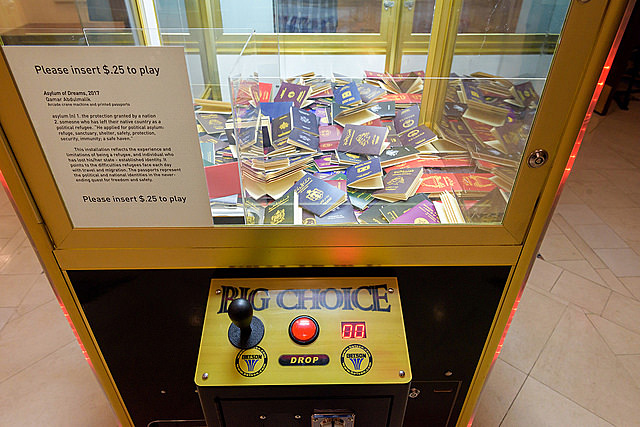
Exterior, The Arab American National Museum, Dearborn Michigan, 2017, All images courtesy of the AANM
Epicenter X is a small exhibition, but as the Michigan’s first significant show of contemporary art from Saudi Arabia, it carries some cultural weight. Featuring works by 20 emerging and mid-career artists, this traveling show, supported by Saudi Arabia’s newly established King Abdulaziz Center for World Culture, has already worked its way through six other venues as it travels across the country; future stops include New York and Washington D.C. Through October, Epicenter X can be viewed at the Arab American National Museum in Dearborn, Michigan, a city famously home to the nation’s largest concentration of Arab Americans.
In the exhibition catalogue, Devon Akmon, director of the AANM and curator of the show, writes that although Saudi Arabia is a crucial ally of the United States in the Arab World, little is known in America about its people or its culture. Redressing this, Epicenter X seeks to challenge stereotypes of Arab culture by amplifying the voices of contemporary Saudi artists with a particular emphasis on the exploration of “urbanization, globalization, religion and the impact of American popular culture in Saudi society.”

Ahmed Angawi, Wijha 2:148 – And everyone has a direction to which they should turn, 2013, Digital Lenticular Print mounted on Aluminium
The exhibition features photography, graphic design, performance, video, sculpture, and painting, frequently delivering traditionally Arabic forms (particularly calligraphy) through modern media. While much of the art on view is clearly rooted in hundreds of years of Arabic visual culture, other works are emphatically contemporary, making conceptual, politically-charged statements on current issues like immigration, Guantanamo Bay, or the 2011 Arab Spring (its reverberations still echoing in Syria today).
Qamar Abdulmalik’s Asylum of Dreams, for example, presents viewers with a functional mechanical-claw arcade game filled, not with toys or plush animals, but passports from several dozen countries; they’re teasingly on display, yet, like political asylum itself, frustratingly unattainable for many people. The work is a poignant metaphor of the plight of those with no state-established identity– people who, as Abdulmalik movingly states, “are homesick but have no place to be homesick for.”

Qamar Abdulmalik, Asylum of Dreams, 2017, Crane Machine installation with printed passports
Similarly addressing a serious issue with understated humor is Musaed Al Hulis’ Ideologies for Sale, a vegetable cart ironically equipped with a prominent mihrab, the ornamental architectural element found in any mosque which indicates the direction of Mecca, toward which all the world’s Muslims pray. In this wry juxtaposition of a fixed point with a mobile pushcart, Al Hulis criticizes “cheap ideologies, seasonal beliefs, and lack of direction…toying with compliant minds, solely in the pursuit of power, supremacy and profit.”

Musaed Al Hulis, Ideologies for Sale, Mixed Media on Wood, 2013
Many works on view inventively translate traditional Arabic culture into a 21st century visual language, such as Nugamshi’s visually hypnotic “calligraffiti.” There’s a calligraphic work created on site in the show’s primary exhibition space, but a video on the AANM’s second level shows the artist at work on other projects, and his process is thoroughly mesmerizing. Nugamshi spreads canvass on the ground and enacts a sort of dance with a large paint-loaded brush (which looks like a broom), which he gracefully swoops across the canvass in rapid strokes while somehow maintaining absolute control over the subtle variations in the value and thickness of each calligraphic swipe. The result is something which has both the curvaceous elegance of traditional Arabic script and the raw intensity and large scale of street graffiti.
While Epicenter X is intimate in scale, there’s an impressive variety of media and diversity of participants (among the artists include a dentist, an architect, and a Facebook developer). The show comes with a helpful complimentary exhibition catalogue (available online), itself easily worth the $8 price of admission, but to get the most from the experience, perhaps time your visit to correlate with the culinary walking tours the AANM offers of the surrounding markets. Many of us too often treat the pan-Arabic world as a monolith, and in adding even just a bit of nuance and texture to our understanding of Arab culture, this show fosters increasingly-necessary cross-cultural dialogue, and serves its purpose well.
